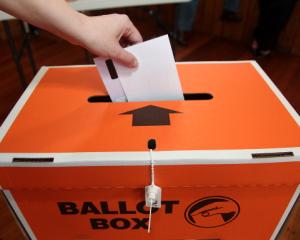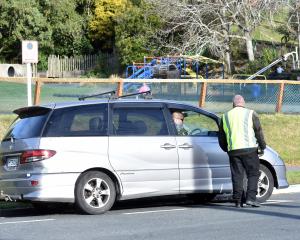
Recent reporting by RNZ confirms they will be replacing their existing X2 Tasers which have built-in cameras, but police are keeping mum about what the replacements might be.
Also, there appears to be confusion between the police and Police Minister Ginny Andersen about whether any new Tasers would have built-in cameras or more modern technology which pairs the weapons with body-worn cameras which are activated when the Taser is used.

Nobody is willing to discuss the possible cost of Taser replacements either, it seems, although it is likely to be multimillions of dollars.
Tasers were trialled by police in 2006 before being introduced throughout the country in 2010. Initially they were held in a locked box in police vehicles, but in mid-2015 the move was made to routine carriage of Tasers by frontline staff.
When that change was made, police said analysis of use of force data showed the Taser was one of the least injury-causing tactical options available, with a subject injury rate of just over 1% for all deployments.
The most recent figures released by the police on Taser use, for 2021, show they were deployed 1629 times, up from 1367 the year before.
Most uses of tasers involved what is called laser painting (63% of total presentations) where the target is highlighted with a red dot, but no discharge occurs.
The weapons were discharged 322 times, making up 20% of total presentations, 15 of them in the southern policing district.
Their use has not been without controversy, with concerns raised about the number of times they have been deployed on Māori and young people or those with mental health issues, ineffective discharges and fears they could be over-used.
Without knowing how Taser events will be recorded with any new models, it is impossible to tell how they will be monitored for public safety.
Officers’ required reporting of any use of force and the oversight of the Taser Assurance Forum will not be sufficient when in the past presumably the forum has had access to the built-in camera footage.
One of the issues which is likely to be looming large in the considerations of police is the cost of storing data.
RNZ reports that the existing Taser footage goes to United States Taser maker Axon’s cloud storage system evidence.com hosted by Amazon Web services in Australia. This also raises the issue of whether there needs to be more discussion about the wisdom of storing sensitive data offshore.
In the past six months the privacy commissioner has talked with police about Axon but was not at liberty to reveal the content of these discussions, RNZ reported.
Perhaps we should be reassured the police have at least got that far.
They do not have a good track record on sharing information about their plans for new technology.
It was only three years ago when we found out they had been conducting an ad hoc trial using controversial facial recognition technology Clearview Al without necessary approval from the police commissioner, the privacy commissioner, or the Cabinet.
At the time they attempted to shrug this off as merely upgrading their existing system.
Last year, a joint report from the privacy commissioner and the Independent Police Conduct Authority about the police’s taking and keeping of thousands of photographs, often on the flimsiest of pretexts, highlighted the slack oversight of the introduction of smartphones to police on the beat, particularly with regard to privacy.
Earlier this year, the police were reported as saying before any replacement of the Tasers there would be public consultation.
Since updating the Tasers is expected "from 2023" they are running out of time to do that properly.












